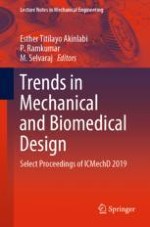2021 | OriginalPaper | Buchkapitel
C4–C5 Segment Finite Element Model Development and Investigation of Intervertebral Disc Behaviour
verfasst von : P. Susai Manickam
Erschienen in: Trends in Mechanical and Biomedical Design
Verlag: Springer Singapore
Aktivieren Sie unsere intelligente Suche, um passende Fachinhalte oder Patente zu finden.
Wählen Sie Textabschnitte aus um mit Künstlicher Intelligenz passenden Patente zu finden. powered by
Markieren Sie Textabschnitte, um KI-gestützt weitere passende Inhalte zu finden. powered by
